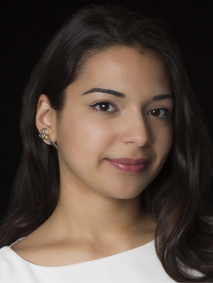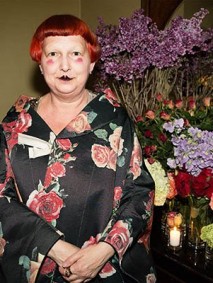Fashion Studies
Parsons School of Design's MA Fashion Studies
Fighting for Visibility in Fashion from the Lecture Hall

(Photo attributed to Sarah Rocco for The New School)
For too long, fashion has been living in its own post-racial bubble. When countless models of color were turned away because the brands already “had a black/Asian girl” in their shows, the systematic inequality within the fashion industry appeared amid the dream and fantasy in the glossy pages. Now, as the percentage of minority models reaches an all-time high; the Haitian-American Kerby Jean-Raymond, of the politically-aware, racial tension-addressed Pyer Moss, won the CFDA Fashion Fund; Dapper Dan’s atelier thrives in Harlem again with backing from Gucci–it finally seems like time to address race in fashion. Fashion education, with its responsibility for nurturing the next generations of talent, is a crucial part of rewriting fashion’s status quo. MAFS alumni Kim Jenkins, lecturer at Parsons, is a front runner of this revolution, with her class Fashion and Race. With Jenkins’ recent exhibition Fashion and Race: Deconstructing Ideas, Reconstructing Identities (October 27–November 11, 2018) featuring eleven bold and exciting Parsons students and alumni and a well-received talk with the venerable André Leon Talley, current MAFS student Diana Cao chats with Kim Jenkins on her professional trajectory, being an educator in fashion, and “building a more creative and equitable fashion system.”
This interview has been edited and condensed.
DC: What has made you decide to pursue a master’s degree in Fashion Studies?
KJ: I was always interested in fashion–from dressing myself elaborately to acknowledging it as a practice of self-actualization in many ways. I ended up studying cultural anthropology and art history in undergrad and it was during that time that I discovered “fashion studies” amongst the stacks of my university library in Texas. Along the spines of those books I read the names, Diana Crane, Joanne Eicher, Hazel Clark, Lou Taylor, Valerie Steele and Anne Hollander and felt encouraged by the fact that fashion had depth! It was during the late summer of 2010 that I found the MAFS program and knew that I had found the perfect fit. In preparation for applying, I worked in the Dallas Museum of Art as a “volunteer curatorial intern,” and it turned out my timing was impeccable because they needed an intern to assist with two of their first-ever fashion exhibitions. I worked as an intern for the DMA’s African headdress exhibition and the Jean Paul Gaultier show for about eight months, and during that time I was accepted into the MAFS program and joined their second cohort in 2011.
DC: How do you describe a degree in Fashion Studies to your family and friends who are not familiar with the field?
KJ: “I explore why we wear what we wear.”
DC: What was the best internship you had taken during your two years as a Fashion Studies student and why?
KJ: I would say that the best internship was when I was a fashion writer for Portable.tv, an Australian multi-platform site that was operating near Chelsea. I was not only given writing assignments, but my editor Kat George (formerly of Vice and Thought Catalog) enabled me to attend NYFW shows, visit designer studios and even dabble in interviewing new-to-the-scene musicians like Mac DeMarco. Most notably, it was through Portable that I met my friend and collaborator, Becca McCharen-Tran, who was getting her label CHROMAT off the ground.
DC: What was the topic of your graduate thesis and why/how did you decide to choose that topic?
KJ: My thesis topic was interested in how women who go through breakups or divorce manage their appearance after the event. I had actually conceptualized and committed to the thesis topic before I started my coursework in the program. Thankfully, the topic was approved, but it definitely took finesse to argue that the phenomenon I had observed could be investigated in a scholarly manner.
DC: What has drawn you to becoming an educator in fashion?
KJ: To be completely honest, I always wanted to teach in some way, but wasn’t sure that the opportunity would present itself. I’m in my fifth year of teaching now, and I continue to find the work incredibly rewarding–not only have I established a career for myself that engages with the evolving discourse in fashion history and theory, but I’m able to help shape it. Added to that, I try to make the course material fresh, relevant and exciting for my students in hopes that they will take that knowledge with them to build a more creative and equitable fashion system.

(Photo attributed to Sarah Rocco for The New School)
DC: How does your training in Fashion Studies prepare you for your current professional role as a lecturer at Parsons?
KJ: I will admit that it was rather intimidating going into a classroom to profess the principles and concepts of fashion studies fresh out of the program, as I felt that the field of fashion studies was relatively nascent and still situating itself. However, taking courses such as Fashion Studies: Key Concepts, Fashion Culture, New York Fashion and Interpreting Fashion helped me to establish a pedagogical framework in terms of explaining fashion theory and history to undergrads. It takes years to feel confident about what you’re doing, and it wasn’t until my third or fourth year of teaching that I was able to find my own method of teaching fashion studies. That was when I felt comfortable enough to disturb the framework a bit by introducing my course, “Fashion and Race.”
DC: Are you still in contact with some of your classmates in the Fashion Studies program? If yes, how has the network of alumni shaped your experience both during and after the program?
KJ: Absolutely–we are a tight-knit bunch. Those of us who graduated in the early years of the program were passionate about being part of the field’s development, and since the frontier was relatively uncharted at the time, we established a peer-based publication, The Fashion Studies Journal (2012-present) and the Fashion Studies Alliance (2017-present) which has served as a support group for those of us who wish to remain in the field as educators, curators, conservators, practitioners, and so on.
DC: What are your advices to students who are graduating from the Fashion Studies program and are seeking to start a career as an educator in fashion?
KJ: You should have an original and informed point of view, feel confident about how you can advance and/or support the field, and feel very comfortable with networking. I knew since the day of orientation in the MAFS program in 2011 that I wanted to use my scholarship for public-facing work (which would include the incorporation of media). I knew that that was going to be a crucial platform for knowledge production in the upcoming years, so I’m focused on bringing my work into videos, podcasting and being friendly with digital media producers in fashion.



